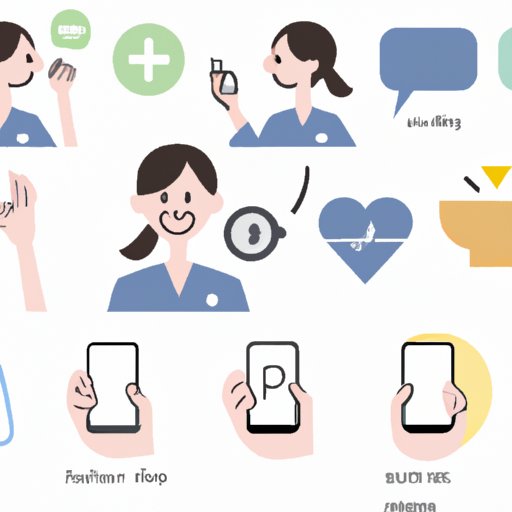Introduction
Health communication is an essential part of healthcare. It involves the exchange of information between healthcare providers, patients, and other stakeholders to ensure that everyone involved understands the health issue and can make informed decisions. This article will explore the basics of health communication and discuss how it is used in healthcare.
Exploring the Basics of Health Communication
Health communication is defined as the exchange of information between healthcare professionals and patients to improve health outcomes. According to a study published in the journal Patient Education and Counseling, “Health communication is a process of creating, receiving, and exchanging messages with the purpose of promoting health-related behavior.”
The role of health communication in healthcare is to provide accurate and timely information about medical conditions, treatments, and services. It also helps to build trust between healthcare providers and patients, which can lead to better quality care. Additionally, effective health communication can help reduce errors and improve patient outcomes.
The benefits of effective health communication include improved patient satisfaction, increased compliance with treatment plans, and greater understanding of medical conditions. A study published in the journal Health Promotion Practice found that “patients are more likely to follow their treatment plan when they have a clear understanding of their condition and treatment options.”

Understanding the Role of Health Communication in Healthcare
There are several different types of health communication. These include verbal and nonverbal communication, interpersonal and mass communication, and digital and social media communication. Each type has its own advantages and disadvantages, and understanding how to use each one effectively can help healthcare providers communicate more effectively with patients.
Verbal and Nonverbal Communication
Verbal communication involves speaking directly to the patient, while nonverbal communication includes gestures, facial expressions, and body language. Both forms of communication are important for conveying information, building trust, and establishing rapport. The key is to be aware of what you are communicating and to use both forms of communication in a way that is appropriate for the situation.
Interpersonal and Mass Communication
Interpersonal communication occurs between two people, while mass communication involves sending messages to a large group of people. Health communication often involves both types of communication, depending on the situation. For example, healthcare providers may use interpersonal communication to explain a medical condition to a patient, while mass communication may be used to promote healthy lifestyle choices to a larger audience.
Digital and Social Media Communication
Digital and social media communication are becoming increasingly popular in healthcare. Digital communication includes websites, online forums, and video conferencing. Social media communication includes platforms such as Facebook, Twitter, and Instagram. These forms of communication can be used to provide health information, connect with patients, and engage with the public.

How Technology is Changing Health Communication
Technology is changing the way healthcare providers communicate with patients. Technology can be used to educate patients about their health, provide reminders, and facilitate communication between healthcare providers and patients. A study published in the journal Telemedicine and e-Health found that “technology-mediated communication can improve patient engagement, reduce costs, and increase access to care.”
Technology can also enhance communication by providing real-time feedback, improving accuracy, and allowing for more personalized care. For example, smartphone apps can be used to track symptoms and monitor progress, while telemedicine can enable remote consultations with healthcare providers.
Conclusion
Health communication is an essential part of healthcare. It involves the exchange of information between healthcare providers, patients, and other stakeholders to ensure that everyone involved understands the health issue and can make informed decisions. This article explored the basics of health communication, including its definition, role in healthcare, and the different types of communication. It also examined how technology is changing the landscape of health communication.
In conclusion, effective health communication is essential for improving patient outcomes. Healthcare providers must understand how to use different forms of communication, such as verbal and nonverbal, interpersonal and mass communication, and digital and social media communication. Additionally, technology can be used to enhance communication and improve patient engagement. Further research is needed to understand the impact of technology on health communication.
(Note: Is this article not meeting your expectations? Do you have knowledge or insights to share? Unlock new opportunities and expand your reach by joining our authors team. Click Registration to join us and share your expertise with our readers.)
